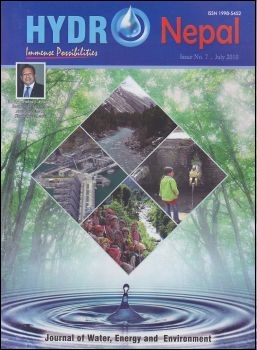The Slaughter House Waste Management
DOI:
https://doi.org/10.3126/hn.v7i0.4236Keywords:
Slaughter house effluent, Sedimentation, Alum, Activated sludge system, PakistanAbstract
Thousands of animals are slaughtered every year in Pakistan, but unfortunately there is no proper mecha-nism nor waste water management system to handle the effuent discharge of the slaughtering process. Therefore, this study was designed to evaluate the potential hazards associated with slaughter houses, by analyzing waste-water characteristics and designing a suitable treatment system for safe effuent disposal. The results obtained indicate that the wastewater parameters of the slaughter house do not meet the requirements of the local effuent dis-charge standards. The average wastewater characteristics in terms of COD, BOD, TDS, TSS, turbidity and pH observed were 9600mg/L, 7450 mg/L, 1650 mg/L, 2280 mg/L, 1489 NTU and 6.5, respectively. The results of plain sedimenta-tion point out that the maximum removal effciency of COD, BOD, TDS, TSS and turbidity at 80 minutes of detention time could be obtained as13%, 21%, 10%, 30% and 39%, respectively. Out of the three coagulants tested, the alum was tested out as the most suitable coagulant in terms of its treatability performance, which gives 80% COD removal compare to lime and magnesium sulfate that gives about 56% and 71% removal, respectively. The activated system designed consists of 12m x 7.5m x 3.5m rectangular aeration tank and 12m x 7m x 5m secondary sedimentation tank. The amount of air, power and the major nutrient (N and P) required for this system were worked out as 136m3/min, 7.8kW, 152 N-kg/day and 30 P-kg/day, respectively.
Key words: Slaughter house effluent; Sedimentation; Alum; Activated sludge system; Pakistan
DOI: 10.3126/hn.v7i0.4236
Hydro Nepal
Journal of Water, Energy and Environment
Vol 7, July, 2010
Page: 48-53
Uploaded date: 31 January, 2011
Downloads
Downloads
How to Cite
Issue
Section
License
The copyright of the articles and papers published is held by HYDRO Nepal Journal.
The views and interpretation in this journal are those of author(s), and HYDRO Nepal does not bear any responsibility for the views expressed by authors in the journal.




